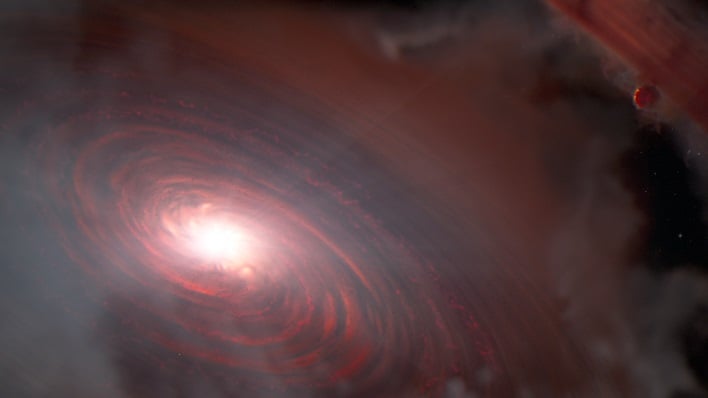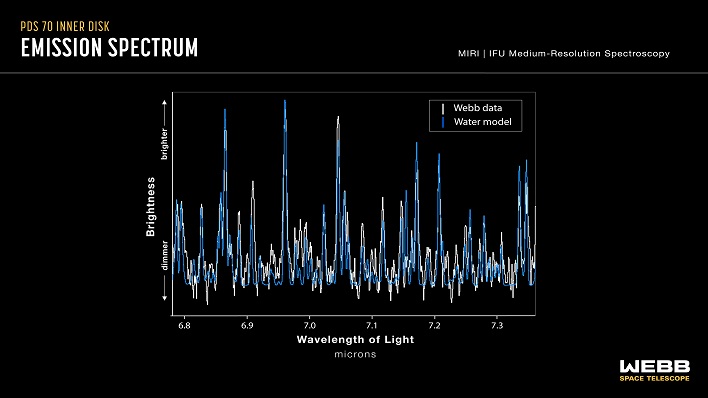JWST Detects Water In A Region Known To Host Protoplanets And It Has NASA Stoked

The new finding by JWST comes from the planetary system PDS 70, which lies 370 light-years from Earth. NASA says that the planetary system's host star hosts both an inner disk and an outer disk of gas and dust that are separated by a vast gap that measures 5 billion miles wide (8 billion kilometers). It is in that gap where the new findings indicate that a water reservoir exists that could provide terrestrial planets with one of the most valuable ingredients for life.
"We've seen water in other disks, but not so close in and in a system where planets are currently assembling," remarked lead author of the new study, Giulia Perotti of the Max Planck Institute for Astronomy (MPIA). "We couldn't make this type of measurement before Webb."
Thomas Henning, a co-author on the paper and co-principal investigator of Webb's Mid-Infrared Instrument (MIRI), added that the discovery was "extremely exciting" due to the fact that it comes from a region where protoplanets similar to Earth typically form.
The star which the protoplanets orbit, PDS 70, is a K-type star. These types of stars are not as hot as our own Sun due to them being relatively old. This made finding water vapor even more surprising to those investigating the findings by Webb.
It is important to note that while protoplanets have been detected in the outer disk, astronomers have not found any planets forming within the inner disk of PDS 70 yet. But this does not mean they do not exist, as the materials needed to do so are believed to be readily available.
"We find a relatively high amount of small dust grains. Combined with our detection of water vapor, the inner disk is a very exciting place," exclaimed co-author Rens Waters of Radboud University.
Researchers believe there to be two possible scenarios as to the origin of the water vapor. The first is "water molecules are forming in place" as hydrogen and oxygen atoms combine. The second possibility is that ice-coated dust particles are moving from the cooler outer disk to the much hotter inner disk.
The team is far from done with its research. NASA intends on using two more instruments onboard JWST, its NIRCam and NIRSpec, in hopes of finding more data that could provide more answers, such as how water could survive so close to PDS 70.


